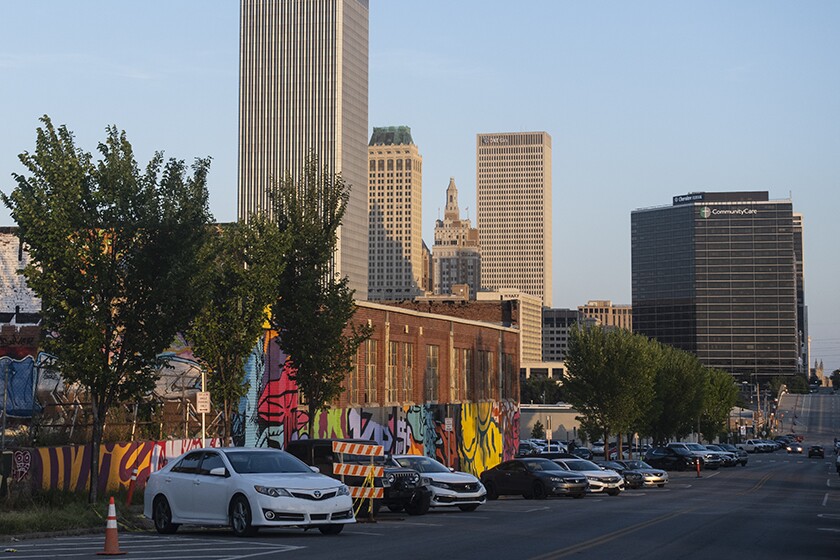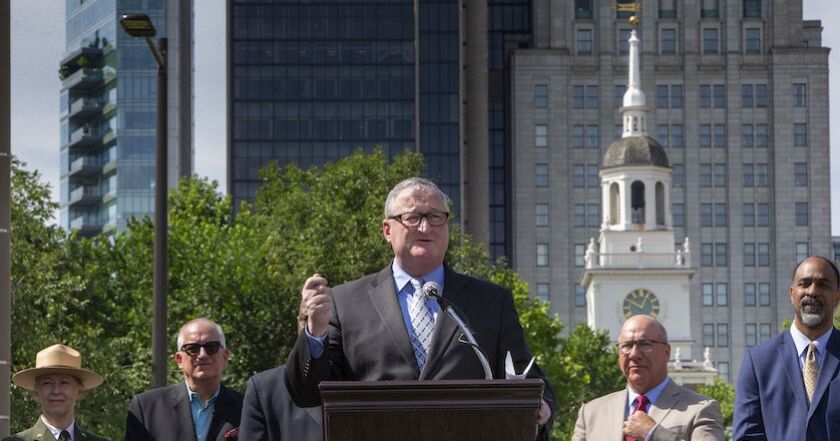Moreover, workers with higher salaries are significantly more likely to work remotely every day. Less than a third of workers earning between $25,000 and $50,000 work remotely five days a week, compared to almost half of those earning $150,000 or more.
Supported by local government, businesses, nonprofits and philanthropists, an increasing number of cities are offering incentives to remote workers to encourage them to relocate and add strength to local economies. At present, nearly 70 communities have such programs, according to Evan Hock, co-founder of MakeMyMove.
Hock’s service, based in Indianapolis, began as an effort to address the shrinking workforce in Indiana and to overcome the challenges of recruiting during a pandemic. “We realized that what we built for Indiana was broadly useful,” says Hock. “At a time when millions of workers were suddenly geographical free agents, there was a unique opportunity for communities to engage these remote workers.”
Hock set out to create a “one-stop shop” for workers thinking of relocating. His staff work to identify every available incentive program and what it includes. There’s no cost to communities to be included on the platform and they don’t have to request it, though MakeMyMove has paid services to assist them.
The marketplace is growing quickly, Hock says. Just two years ago, only about 20 communities had programs. “As there are more and more workers that can be recruited, we’re seeing more and more communities and richer offers emerge.”

(Mattoon in Motion)
Mattoon in Motion
Located in Central Illinois, Mattoon is a community of just under 17,000; the median price for a three-bedroom home in Mattoon is about $90,000. Its incentive package leads with $5,000 cash toward moving expenses, backed by another $6,000 in benefits ranging from a family YMCA membership to free co-working space and gift cards. The program is supported entirely by the local business community.
Move to Mattoon launched in June of this year and in the first two months 130 remote workers have applied, says Alexander Benishek, a full-time volunteer at the economic development agency Mattoon in Motion. Founded in 2017 by community members, the nonprofit won a $250,000 grant from Google in 2019 to support its efforts to foster economic development and grow local talent.
Benishek spent the past six years serving in the Peace Corps and AmeriCorps and came to Mattoon for 11 months through a graduate program in community and economic development at Western Illinois University.
“We want to bring someone into the community who doesn’t just want to come for the incentive,” says Benishek. “What we’re really looking for is what they have to offer — do they have skills or knowledge that’s lacking in the community, do they have a history of volunteerism or leadership experience?”
As applicants have been screened, Benishek has been gratified to find that most are motivated by a desire for a better quality of life. To date, they have largely been workers in tech fields or leadership positions. Those with families, or who plan to start families, have extra appeal.
“We don’t judge based on that, but it’s something we like to see,” he says.

(Communications Bureau, City of Rochester)
Diversity and Brainpower
Greater ROC Remote offers $10,000 in relocation incentives and up to $9,000 in grants to homebuyers. It grew out of work the Greater Rochester Chamber of Commerce had begun before the pandemic to develop strategies to attract and retain talent to the upper New York city, says Barbara Egenhofer, director of talent strategy for the chamber.
“We had heard about Tulsa Remote and knew they had great success with their program,” she says. “We interviewed them, got a sense of the return on investment and thought it would be a great fit for our region; COVID was interesting timing, I guess.”
Program participants can live in the greater Rochester region, a metro area with over a million residents on the shore of Lake Ontario. The goal for the program was to bring in 600 families over three years and 100 in the first year; since applications opened six months ago, more than 500 people from 49 states have expressed their desire to relocate to the region. “I honestly thought it was going to be a little bit harder,” says Egenhofer.
Applicants go through a multiphase interview process, first to verify that they have full-time remote jobs, are eligible to work in the country and can relocate within six months. Additional rounds of questions gather more detail about their employment, who might be relocating with them and the like.
Those who make it through are interviewed over Zoom. So far, about a dozen families have negotiated the entire process and relocated to the region, says Egenhofer. At present Greater ROC has funding for 40 relocations, and every slot is filled. To date, all funding has come from businesses and philanthropists.
Some applicants have a connection to Rochester and want to return, says Egenhofer. Others are attracted by the city’s investments in infrastructure and its downtown area. Remote workers in New York City realize they could afford a home in Rochester for the same amount of money they are paying for a 1,000-square-foot apartment.
The aim is to increase diversity, and to bring in people who can add brainpower to software hubs and the region’s health-care community, even if they are working for employers elsewhere. The chamber organizes monthly social events for those who have relocated to help them get to know each other and build a sense of community.
An interesting side benefit is that many of these people are coming with a significant other or two or three who is looking for a job,” says Egenhofer. “It's ended up being a win-win.”

(Community and Economic Development Associates)
Slow Growth
A town with a population just over a thousand, Harmony, Minn., is not aiming for its relocation incentives to bring explosive growth. It offers up to $12,000 in cash rebates toward the purchase of a new home, and one or two new homes a year is enough for Harmony to meet its goals, says Chris Giesen, vice president of Community and Economic Development Associates (CEDA).
CEDA has helped Harmony with its economic development efforts for three decades. It set up Harmony’s incentive program in 2014, well before the pandemic. The growth of remote work created an opportunity to expand its reach.
Unlike many other parts of the country, Harmony has empty lots in areas for which the city is paying for water, sewer and snow plowing services or providing police protection. The incentive is paid on a sliding scale up to a maximum of $12,000 and only applies to new construction or major renovations. The program is funded through the city budget, and the city recoups its investment within four or five years as homeowners assume the cost of its services.
Despite predictions that the 2020 census would find that Harmony had lost population, it instead found 3 percent growth. “We were one of three cities in our county that saw growth, and this program was part of that,” says Giesen.
“When you adjust for size, if we build one or two houses a year, we’re hanging in there with our large neighbors,” he says. “Everybody’s pretty excited.”

(Greater Topeka Partnership)
Catalyzing Change
In Kansas, the Greater Topeka Partnership serves as an umbrella agency for organizations including Go Topeka, the Topeka Chamber of Commerce and Visit Topeka, using sale tax funds to pursue economic development projects. Historically, these funds have been used to go after brick-and-mortar development projects, says Bob Ross, senior vice president of marketing and communications for the Greater Topeka Partnership, but a few years ago some were reallocated to talent development.
Initially, the Choose Topeka program was created as a public/private partnership to attract workers who lived outside of Shawnee County to relocate and work there. Employers would offer up to $15,000 to workers toward the purchase of a home and Choose Topeka would reimburse half of this after a year.
In August of 2020, the program was expanded to include remote workers, offering them up to $5,000 to cover rent in the first year of location and up to $10,000 toward a home purchase. The program was funded with the intention of bringing about 30 families a year to Shawnee County. To date, it has received 6,000 applications and counting.
“We didn’t anticipate how popular this would be out of the gate, or that it would catch so much national and international attention,” says Ross. “So far, we’ve brought about 70 families here.”
Considerable time is spent interviewing candidates for the remote worker program. “We are definitely looking at their values, how they engage their community and their volunteerism,” says Ross. “If you’re going to invest in a person, you're not just bringing wages, you're bringing intellectual and emotional capital to a community.”
For the past decade, Topeka has had “the hood up,” says Ross, redeveloping and reinventing the city to ensure it remains a vibrant destination for years to come. It increased its GDP by a billion dollars, cut poverty by 44 percent, increased average household wages by 35 percent and invested $150 million to revitalize its downtown.
In recent years, Topeka’s housing market has been hot and the average price of a three-bedroom home has increased from $120,000 to $160,000, still less than half the national median. Bringing in 30 families a year through incentives isn’t likely to play a major role in pushing up costs, but an inventory shortage won’t help growth.
The wages that remote workers earn tend to outpace standard wages in Topeka. In addition, they are buying homes and often bringing trailing partners with them who also work remotely. The city envisioned a threefold return on its $15,000 investment, but the ROI is proving to be almost five times that, says Ross.
“It’s hard to get stakeholders to come together, but when you get that kind of synergy, you can make catalytic difference within a community.”

(Ascend West Virginia)
Outdoor Economic Development
Three states have statewide incentive programs for remote workers — Indiana, Vermont and West Virginia. The West Virginia program, Ascend West Virginia (Ascend WV), offers a $12,000 cash incentive and emphasizes work-life balance by also providing thousands of dollars in free outdoor recreation.
Ascend WV is being rolled out gradually and currently encompasses three communities: Morgantown, the Greenbrier Valley and the state’s Eastern Panhandle. It was founded by tech entrepreneur Brad Smith, a West Virginia native who served as CEO of Intuit and has returned to his home state to serve as president of Marshall University.
West Virginia had one of the greatest population losses of any state in the 2020 census, says Emily Huguenin, director of Ascend WV, so much so that it lost a congressional seat. Young people are leaving for better-paying jobs, and an aging population is literally dying off.
On the other hand, people come to the state from all over the country for its wilderness areas, for hiking, white water rafting, rock climbing and exploring. “They’re loving the experience that they have once that know that it’s here, but we keep hearing the story that people don’t know about West Virginia.”
Partners in Ascend WV include the Outdoor Economic Development Collaborative, West Virginia University (WVU) and the West Virginia Department of Tourism. The first round of applications for the program, for relocation to Morgantown, opened in spring of 2021. More than 7,500 people applied for 50 spots.
Applicants have included tech workers, but also educators, artists and entrepreneurs, Huguenin says. “The type of person we’re looking for speaks to our three goals for the program — community, purpose and the outdoors.”
These are manifested in a desire to become part of a community, to help make it better and to have an interest in West Virginia’s abundant natural assets. The relocation support spans two years, including free co-working space, social programming and outdoor recreation opportunities.
“We have some partners at WVU who are helping us put together an economic impact survey, but it's just not ready yet because we're too early in the program,” says Huguenin.
“I can assure you that we’re going to keep growing; over a course of seven years, we expect to have a thousand remote workers scattered through all our locations.”
Remote or Bust
The scale of the response to incentive programs, and the early indications that they can pay for themselves several times over, would seem to make the case for more cities to adopt similar strategies to attract remote workers.
“We did a survey a little over a year ago that showed that over half of workers would rather leave their job than go back to the office,” says Hock. “It was close to 70 percent of people under 40.”
As never before, workers can vote with their feet and choose the community that is best for them. Communities that smooth relocation will reap the rewards it brings.
Hock expects to include relocation offers from outside of the U.S. on MakeMyMove in coming years. “We also expect a lot more communities to pop up offering these sorts of programs; we think there are probably about a thousand communities in the U.S. that are a good fit for this type of economic development.”
Related Articles













